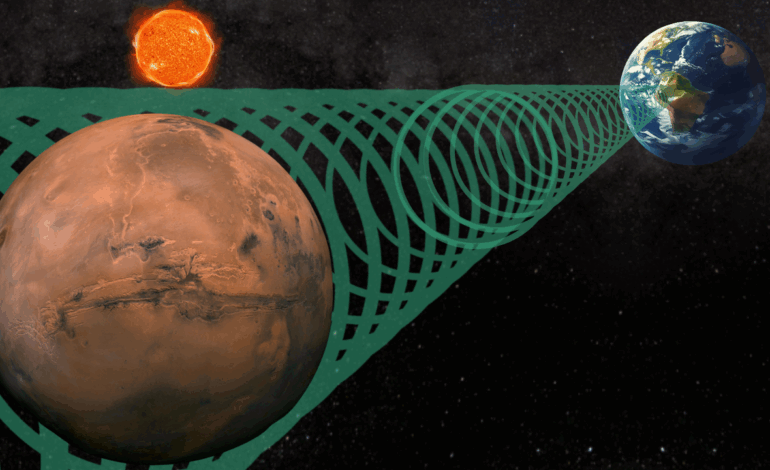NASA Identifies Key Areas to Search for Alien Signals

NASA scientists have pinpointed potential locations to search for signals from intelligent extraterrestrial life. Their research suggests that if aliens explore space as humans do, they may detect our communications emanating from specific alignments of planets within our solar system.
Research Findings on Extraterrestrial Communication
A team from NASA’s Jet Propulsion Laboratory (JPL) and Penn State University conducted an analysis of human transmission patterns to identify when and where intelligent life outside our solar system might intercept signals. The findings emphasize the importance of planetary alignments, particularly between Earth and neighboring planets, such as Mars.
According to Fan, a researcher at Penn State’s Eberly College of Science, “Humans are predominantly communicating with the spacecraft and probes we have sent to study other planets like Mars.” This communication is not entirely blocked by planets, allowing for the possibility that a spacecraft or planet aligned along our interplanetary communication path could detect what may be considered “spillage” of these signals.
The team focused on data from NASA’s Deep Space Network (DSN), which facilitates two-way communication with various spacecraft. By examining the DSN’s logs over the past two decades, they were able to construct a model for detecting human transmissions and their potential reach.
Implications of the Study
Through their analysis, the researchers discovered that signals directed toward spacecraft are predominantly aimed at those near Mars, with additional signals sent towards gravitationally stable points known as Lagrange points. These locations serve as optimal positions for space telescopes like the James Webb Space Telescope (JWST).
Fan noted a significant finding: “If an extraterrestrial intelligence were in a location that could observe the alignment of Earth and Mars, there’s a 77% chance that they would be in the path of one of our transmissions.” This likelihood decreases when not observing an alignment, dropping to 12% for alignments with other planets.
These insights not only inform the search for signals from intelligent life but also indicate that astronomers should pay attention to when exoplanets in other star systems align with their stars. These transits, where planets cross in front of their parent stars, can provide valuable data for identifying potential life-supporting environments.
The research, published on August 21, 2023, in The Astrophysical Journal Letters, highlights the significance of understanding our own communication patterns as humanity continues its exploration of the cosmos.
As the search for extraterrestrial life evolves, the upcoming launch of the Nancy Grace Roman Space Telescope is expected to drastically enhance detection capabilities, with the potential to identify 100,000 new exoplanets, thereby expanding the search area for potential signals.
Fan and his colleagues concluded that signals passing through the DSN are typically oriented within approximately 5 degrees of Earth’s orbital plane, making it crucial to focus searches on planetary systems aligned similarly and located within 23 light-years of Earth.
While the study primarily addresses radio transmissions, the model could also apply to emerging laser communication technologies. Team member Jason Wright, director of the Penn State Extraterrestrial Intelligence Center, emphasized that as humanity progresses further into space, our transmissions will increase, providing more opportunities for potential extraterrestrial detection.
With this research, NASA and its partners are taking significant steps towards understanding not only our own communication potential but also the broader implications for the search for intelligent life beyond our planet.






